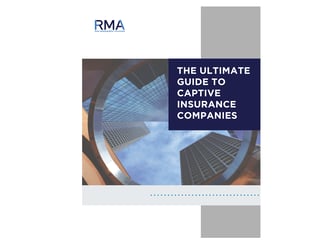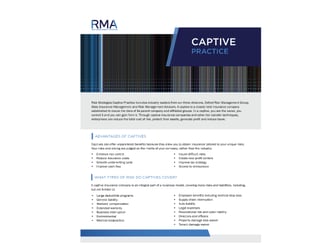Running a captive insurance company comes with its own set of challenges and risks, particularly in terms of regulatory compliance and reporting. It is crucial to stay updated with regulatory changes and ensure proper reporting to regulatory authorities. Having an experienced and competent captive insurance management firm at the helm is critical. Here are some potential challenges and strategies to mitigate and manage these risks.
Staying Updated with Regulatory Changes
Regulatory requirements for captive insurance companies can vary depending on the jurisdiction. It is essential to stay updated with any changes in laws, regulations, and guidelines that may affect the operation of your captive insurance company. This can include changes in capital requirements, solvency ratios, reporting obligations, and compliance standards. Regularly reviewing and understanding these changes is imperative to ensure compliance and avoid any penalties or legal repercussions.
You set up a captive insurance company to reap the benefits of a captive insurance company. Most captive insurance company owners want to be in the insurance business but not to become captive insurance experts. That is where a seasoned team should be retained to keep you out of harm’s way. The captive insurance management firm acts as the “quarterback” and helps you identify and retain best-in-class actuaries, auditors, and tax professionals. It is critical that the management firm has a good working relationship with the regulators so there are no surprises.
Reporting to Regulatory Authorities
Captive insurance companies have reporting obligations to regulatory authorities. These reports can include financial statements, statistical data, risk assessments, and other information as required by the regulatory framework. Accurate and timely reporting is essential to demonstrate compliance and maintain the company's good standing. Given that the captive insurance managers are the main point of contact with the regulators, it is critical that they stay on top of these regulatory deadlines.
Establishing a Strong Governance Structure
A strong governance structure is essential for the smooth operation of a captive insurance company. This includes establishing clear roles and responsibilities, implementing effective decision-making processes, and ensuring transparency and accountability. It is crucial to have a dedicated board of directors and executive management team with the necessary expertise and experience in insurance and risk management.
Regular Monitoring and Reporting
Regular monitoring and reporting are critical to identify and address any potential risks or compliance issues promptly. This can be achieved through the implementation of robust internal controls and risk management systems. Regular financial and operational reports should be generated and reviewed to ensure that the company is meeting its objectives and complying with regulatory requirements.
Internal and External Audit Procedures
Internal and external audits play a vital role in ensuring compliance and identifying any potential weaknesses or areas for improvement. Regular internal audits should be conducted to assess the company's internal controls, risk management processes, and adherence to policies and procedures. External audits are required by regulators or external stakeholders to provide an independent assessment of the company's financial and operational performance.
It is important to note that captive insurance companies may face additional challenges and risks specific to their industry and business model. These can include changes in the regulatory environment, legal disputes, financial volatility, and fraudulent activities. To mitigate these risks, it is crucial to have a comprehensive risk management strategy in place that includes measures such as insurance coverage, contingency plans, and regular risk assessments.
Running a captive insurance company involves various governance and compliance challenges. By establishing a strong governance structure, regularly monitoring and reporting, complying with regulatory requirements, and implementing internal and external audit procedures, these risks can be effectively managed and mitigated. It is crucial to stay proactive and adapt to changing regulatory and industry landscapes to ensure the long-term success of the captive insurance company.
Explore
- Solutions
- Captive Insurance
- Captive Insurance Overview
- What is Captive Insurance?
- Definition of Captive Insurance
- Types of Captive Insurance
- Typical Structures of a Captive Insurance Program
- Why Form a Captive Insurance Company?
- Captive Insurance Utilization and Value
- Evaluating a Captive Insurance Program
- How to Setup a Captive Insurance Company
- Operating a Captive Insurance Company
- Captive Insurance Operating Costs
- Retaining Risk vs. Financing Risk
- Risk Distribution Through Captive Insurance
- Taxation of a Captive Insurance Company
- Captive Insurance Domiciles
- News and Insights
- About Us
Practice Leader(s)

Captive Practice Leader, Managing Director

Captive Practice Leader, Managing Director
Max Jong is the Captive Practice Leader and Managing Director at Risk Management Advisors, an alternative risk and captive management firm. Max began his career at Northwestern Mutual in 1994 after graduating from UCLA. Over 12 years, he built a successful financial services practice while heading up an office overseeing 50 professionals in Los Angeles and Irvine, California. The office was perennially one of the top producing organizations in the Northwestern Mutual system.
Max joined his partners at Risk Management Advisors in 2007 as he began to work with more sophisticated mid-market business owners. RMA specializes in the design, formation, and management of captive insurance companies. There’s also an emphasis on self-funded group benefits as well as other creative alternative risk management strategies. The firm assists business owners in better managing their risks without jeopardizing their balance sheets. In 2019, he headed up a merger with Risk Strategies, a Top 10 private national specialty insurance brokerage and consulting firm. Since then, he was appointed as the Captive Practice Leader to oversee the growth and development of the organization.
For five years, Max served as an Independent Director for Fiat Lux Risk and Insurance Company, one of the largest and most sophisticated captive insurance companies. Fiat Lux was established by the University of California Regents to better manage the broad risks of the University of California system.
Max has also been a lifelong supporter of Big Brothers Big Sisters of Greater Los Angeles. He initially volunteered to be a mentor in 1995 and is currently mentoring his second "Little." Max was asked to join the Board of Directors in 2000 and eventually served as their Board Chair. After 20+ years as an active board member, he continues to support the organization by serving as a Trustee.
He is married to Alice, and they’re raising two young children, Hunter and Hayden. Max and Alice are happily married despite her irreparable mistake of going to USC. He loves to travel, golf, and is a hopeful Lakers fan.
Resources








